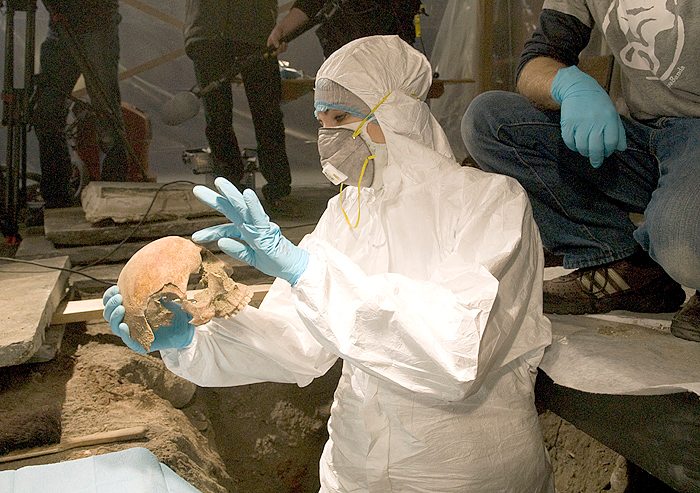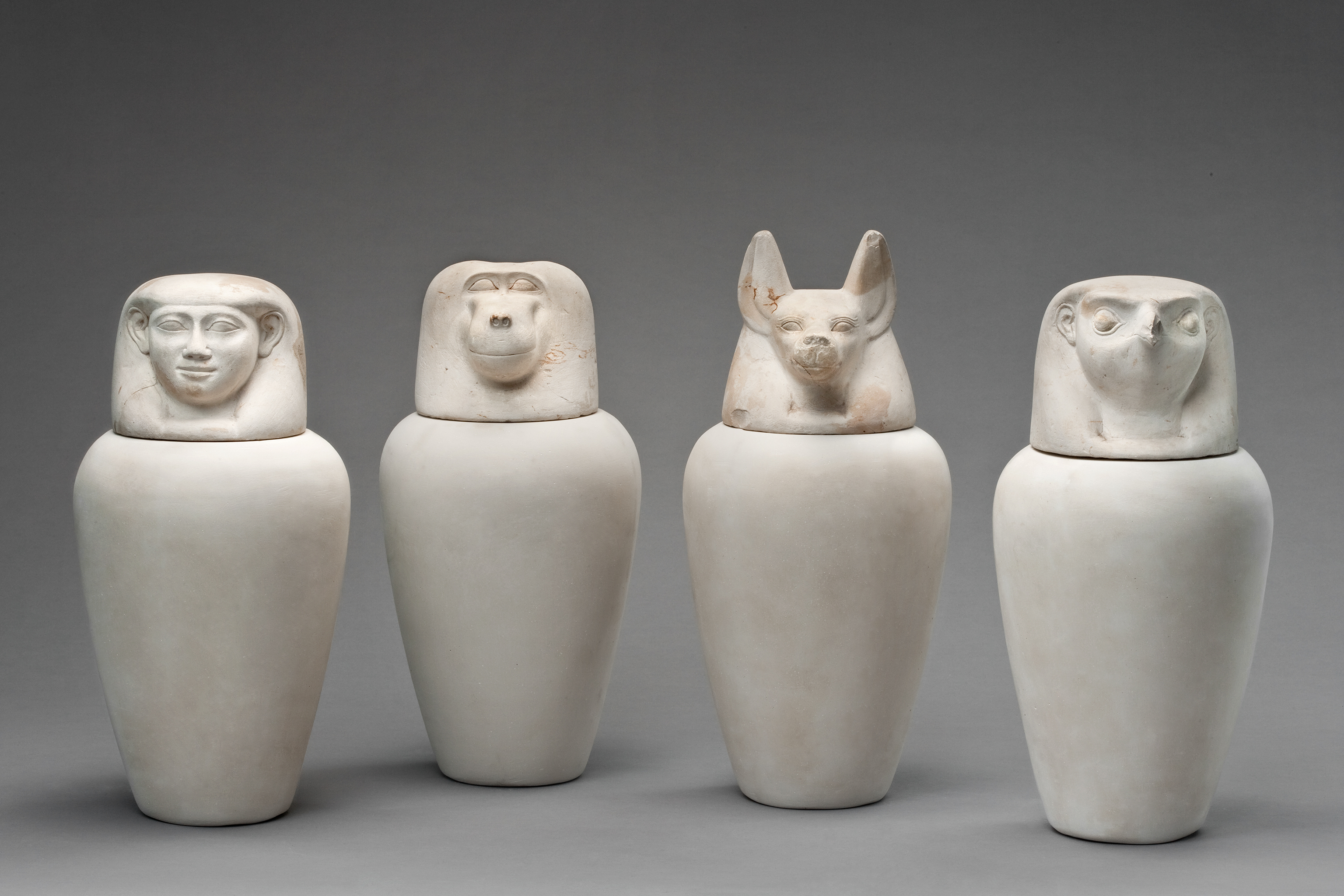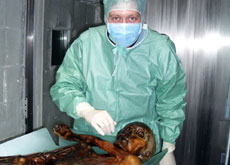DNA tests aim to identify 17th century figure

Archaeologists have reopened a grave in Switzerland to see if DNA testing can confirm it contains the body of 17th century Swiss hero - and killer - Jürg Jenatsch.
Jenatsch is believed to be buried under the flagstones of Chur Cathedral in eastern Switzerland. A body purporting to be his was already exhumed in 1959 by the anthropologist Erik Hug, who identified him on the basis of the clothing and the large blow to the skull.
Now the archaeologists have dug him out again, with a view to identifying him once and for all with new techniques. They are also studying his skull with the aid of a scanner at the local hospital, hoping to reconstruct his face and compare it with contemporary portraits of the notorious Jenatsch.
Who was this man? In the Thirty Years’ War, Graubünden, today a Swiss canton, was an independent republic, and a cockpit for Catholic and Protestant powers seeking to dominate Europe.
Enter Jürg (or Jörg, or Gieri) Jenatsch. He was a Protestant preacher, a handy swordsman, and a leader of fighting men. In one bloody exploit, he led a band of men at night to the castle of Pompeius Planta, a nobleman who was the leader of the pro-Austrian party. According to one story, Planta, realising what was in store, hid up a chimney but was betrayed by the curious behaviour of his dog. He was dragged down by the assassins and murdered on the spot. Jenatsch himself finished him off with an axe.
Later, Jenatsch abruptly changed sides, allied himself with the Catholic powers and converted to Catholicism. This was an unforgivable sin to some of his former comrades in arms. One night during Carnival in 1639, at an inn in Chur, he was surrounded by masked men led by an assassin dressed as a bear who despatched him with an axe which, according to legend, was the same axe Jenatsch had used to kill Planta. The bloody corpse is said to have been buried hurriedly in Chur Cathedral a day later.
Bloody clue
Archaeologist Manuel Janosa, who is leading the renewed investigation of the body, tells swissinfo.ch: “I got interested in the idea of a DNA study when I found that there were shreds of material from his clothing where you could see bloodstains.”
“I also found that there are descendants of the Jenatsch family still living, and they were prepared to volunteer their DNA for a match. But when we discovered that the bloodstains on the clothing were not enough to provide a DNA profile, I asked the Bishop of Chur if I could exhume the body again.”
Janosa says his research team is trying to gather as much evidence as possible to assign an identity to the body. If in the end they cannot get a DNA match, they will have to rely on the other evidence.
“I can assure you, though, that in all probability we are dealing with the grave of Jürg Jenatsch,” says Janosa.
Religious identity
Randolph Head is an American historian of Swiss descent who has written a book about the man, called “Jenatsch’s Axe”. A student of Graubünden history, he was not at first interested in Jenatsch, he tells swissinfo.ch.
In fact he “developed rather a dislike for this unpleasant fellow who kept being given more prominence than I thought he deserved.”
Later, however, Head “got quite interested in how religious identities emerged in Graubünden and Switzerland – the sense on the part of some that they were ‘Catholics’, others ‘Protestants’, in the sometimes religiously divided villages.”
A professor at the University of California Riverside, he says that this interest “reflected my university’s complex and unusually diverse student body, who were themselves very interested in questions of identity”.
What was it that made Jenatsch so utterly ruthless – his own personality, or the times he lived in?
“Jenatsch was most certainly a man of his times – and those times were characterised by instability and a crisis of identities,” says Head. “But clearly, his personality was suited to those times, and allowed him to advance socially and economically in ways that might have been closed to him in a more tranquil era.”
Mystery
Does he think the body in the Cathedral is really Jenatsch? “I see no reason whatsoever to doubt that the bones dug up in 1959 in fact were those of Jenatsch. The wounds to his skull and body conform to contemporary accounts quite closely.”
“I am pretty sure that Erik Hug – who was an extraordinarily meticulous and skilled archaeologist – got the right guy.”
He adds a thought of his own: “The remaining mystery is not who is buried in Jenatsch’s tomb, but rather who killed Jenatsch – a subject about which we can make educated guesses, but for which historical research will never provide irrefutable evidence.”
Rector of Chur Cathedral Reverend Harald Eichhorn says: “I assume it’s Jenatsch in the grave. They have always been pretty sure.”
The body was not removed from the Cathedral for long, he tells swissinfo.ch.
“They have already brought him back and buried him again. I made sure, when the grave was being sealed, that I said prayers over it and blessed it – that was the right thing to do.”
About Jenatsch himself the priest says: “He certainly was a highly ambivalent figure. A man of extremes. A politician, a clergyman, a soldier – even a terrorist. But he is an important figure for Graubünden, just about as important as William Tell for the rest of Switzerland.”
Does he deserve to be buried in Chur Cathedral?
“In the old days it was the custom to bury important people of all sorts in the cathedral,” Eichhorn explains. “So many people are buried here – not only bishops and clergy, but also what we would now call politicians – and whether they all deserve to be here is a moot point. But since Jenatsch has been here for so long, I just think: let him rest in peace!”
In the 17th century, before modern Switzerland as we know it came into existence, Graubünden was an independent state, a loose federation of three regional “leagues”. They were known as the Grey Leagues, from the grey woollen cloaks worn by their citizen-soldiers, hence the name of the canton to this day.
They were divided not only by language – Romansh, Italian, and German – but also by religion, with some populations becoming Protestant while others remained Catholic.
The Thirty Years’ War (1618-1648), which turned much of central Europe into a battlefield, did not spare Graubünden which was strategically important because of its Alpine passes to and from Italy.
There was a constant internal struggle for ascendancy between Catholics and Protestants. In the earlier stages of the war, the Protestants had the upper hand, and Graubünden allied itself with France, which was opposed to the other Catholic powers at the time. Cardinal Richelieu’s Huguenot general, the Duc de Rohan, occupied Graubünden with a French army, allied with Jürg Jenatsch and his followers. Later the Catholics rallied, aided by a converted Jenatsch, and Graubünden switched sides, allying itself with Austria and Spain.
In an almost bloodless coup, Jenatsch double-crossed his ally and friend Rohan and forced him to withdraw his army. This secured the future independence of Graubünden. But Jenatsch paid for it with his life. To this day, the period is known as the “Troubles” of Graubünden.
Chur is something of an anomaly: a historically Protestant city with a Catholic cathedral. It is the oldest city in Switzerland, having been founded by the Romans as Curia Rhaetorum. The cathedral was built on the site of a Roman-era church, in the age of transition between Romanesque and Gothic styles, and was completed in 1272.
At the Reformation, Chur adopted the New Faith, but the Bishop of Chur, who ranked as a prince of the Holy Roman Empire, retained his citadel and his cathedral on the hilltop overlooking the old town. The cathedral has many art treasures from different periods, including a magnificent carved Gothic altar-piece and graves of bishops and other dignitaries. In recent years it was restored to its former splendour and reopened in 2007. In the north-west corner of the building is the grave – supposedly – of Jürg Jenatsch.

In compliance with the JTI standards
More: SWI swissinfo.ch certified by the Journalism Trust Initiative














You can find an overview of ongoing debates with our journalists here . Please join us!
If you want to start a conversation about a topic raised in this article or want to report factual errors, email us at english@swissinfo.ch.